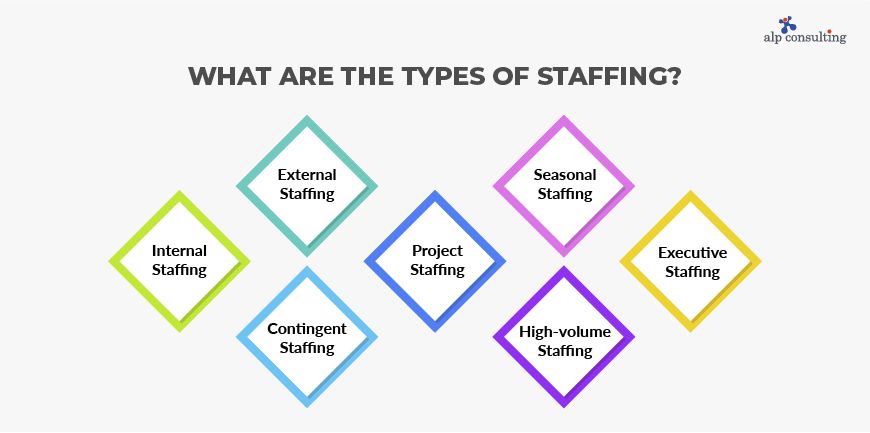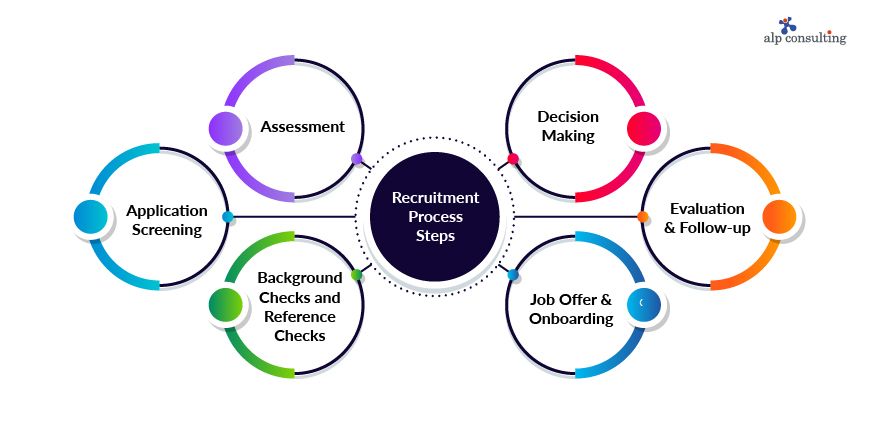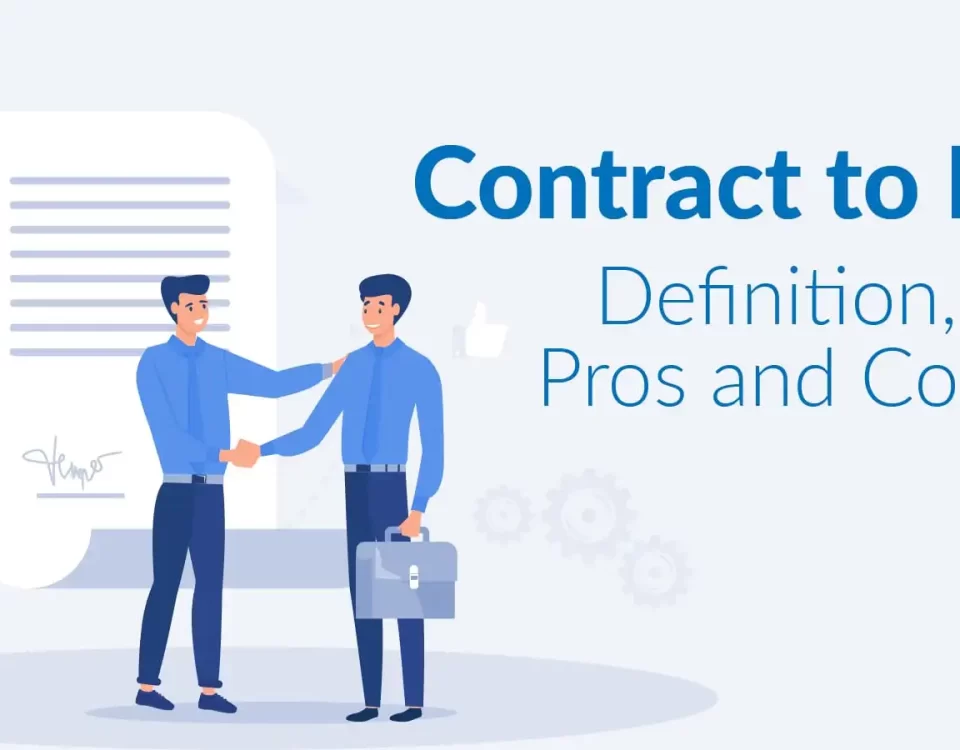
What is the Impact of Drones on the Job Market?
12/07/2023
What is Contract to Hire? Definition, Process & Benefits
13/07/2023- What is Staffing Process?
- What are the 10 Different Types of Staffing Processes?
- What are the Stages in the Staffing Process?
- What is the Selection Process of Staffing?
- 6 Steps Selection Process
- What Are the Challenges in the Staffing Process?
- What are the Latest Trends in Staffing?
- Conclusion
- Key Takeaways
- Frequently Asked Questions (FAQs)
HR Tech Analyst Meghan Biro says, “Staffing isn’t just about filling roles — it’s about building engagement and treating workers (including contract staff) with respect.”
Staffing is not just about recruiting people; it is the strategic pulse of every organization. Today, staffing has undergone a drastic transformation from traditional methods into a more dynamic system, where professionals are selected based on their skills and potential, building sturdy, agile, and diverse teams that drive growth and help achieve organizational goals.
Staffing is the 3rd function in the management process of an organization. Management is the process by which businesses plan and organize their resources and activities to achieve their business goals in the most effective manner possible. The management functions in order are- Planning, Organizing, Staffing, Directing, and Controlling.
What is Staffing Process?
The staffing process is a managerial function that involves acquiring, engaging, and retaining qualified, talented candidates to fill job positions in an organization to help achieve a company’s objectives. In simpler terms, staffing involves placing the right person at the right job.
Staffing in management encompasses various functions like recruiting, selecting, and promoting. To obtain, develop, and retain skilled and motivated employees who can work efficiently for the goals of the organization is considered an inherent part of the manager’s job and responsibility.
Having said that, most organizations fail at the particular task as it is quite time-consuming and needs a lot of resources, which is why they seek the help of a third-party staffing provider who can do the job, a better job, if we may say so, on their behalf.
Let us take a look at the importance of a staffing process that is well implemented and can help organizations thrive.
What are the 10 Different Types of Staffing Processes?
There are several types of staffing processes that organizations can employ based on their specific business needs and dynamics. Some of the common examples of staffing processes are-

1. Permanent Staffing
This staffing type refers to hiring professionals on a full-time or long-term basis, offering them the necessary benefits and job security. The purpose is to fulfil core job responsibilities that are fundamental to the growth of a company.
2. Temporary Staffing
This kind of staffing is conducted when organizations have to hire people for specific tasks or projects. This is a temporary role, and individuals are recruited to meet specific requirements. It could be seasonal demands, spiked workload pressure, or to fill short-term role vacancies.
3. Freelance Staffing
This staffing involves hiring independent workers with niche skills for specific projects or tasks. The advantage of this kind of staffing is that companies can access specialized skills without any long-term obligation or commitment.
4. Internal Staffing
Internal staffing is filling job vacancies with existing employees within the organization. It does not necessarily mean filling in a new position; it could even be promotions, transfers, or lateral moves. This type of staffing process focuses on identifying and developing talent from within the organization, boosting employee morale, retention, and career development opportunities.
5. External Staffing
As the name suggests E,xternal staffing is the recruitment and hiring of candidates from outside the organization. Organizations engage in external staffing when there is a need for new skills, expertise, or a larger talent pool.
If you want to implement an effective external staffing process, you should be involved in activities such as job advertisements, resume screening, interviews, and selection of candidates who are not currently employed by the organization.
6. Contingent Staffing
Contingent staffing refers to hiring individuals on a temporary or contractual basis to fulfil specific short-term needs. Contingent workers include freelancers, independent contractors, temporary workers, or consultants.
If you are not looking to hire a full-time, permanent employee, but are seeking someone with specific talent, skills, and knowledge to successfully execute a project at hand, or for a short-term need, then contingent staffing works for you as this staffing model allows organizations to flexibly manage their workforce and adapt to fluctuating demands without committing to permanent employment.
7. Project Staffing
Much like contingent staffing, but with a small difference of hiring a skilled team instead of one specific worker, project staffing involves assembling a team of individuals with the required skills and expertise to work on a specific project or assignment.
They could be external contractors or may be sourced from other agencies, or may come from different departments of an organization. In Project staffing, diverse talents are pooled together to accomplish specific goals within defined timelines.
8. Seasonal Staffing
It involves hiring temporary workers to meet increased demand during specific seasons or periods of the year. Industries such as retail, hospitality, tourism, and agriculture, where there is a higher workforce fluctuation, engage in seasonal staffing.
Another reason seasonal staffing processes work for certain industries is that they include targeted recruitment efforts, shorter-term contracts, and focused training programs, which are perfect to address their workforce talent needs.
9. High-volume Staffing
High-volume staffing is required during a company’s rapid growth phases or when they are expanding into new markets, as it requires many individuals to fill numerous job openings within a brief time.
10. Executive Staffing
Executive staffing focuses on filling senior-level or executive positions in an organization. Candidates applying for this position are typically highly experienced professionals with great expertise and leadership skills. Executive staffing processes often involve specialized search firms such as Alp, who are industry experts and have the expertise to identify and attract top-level candidates.
What are the Stages in the Staffing Process?
The staffing process or the selection process typically consists of several stages, right from planning, sourcing, selecting to onboarding and following up post-hire, that organizations go through to ensure they have the right people in the right positions.
A strategic staffing process involves various stages depending on the specific job requirements of the client organization.
11 Stages in a Staffing Process
- Planning
- Recruitment
- Screening
- Selection
- Background checks
- Decision making
- Onboarding process
- Training and development
- Promotions
- Transfers and appraisals
- Remuneration determination
An employer or an in-house HR (Human Resources) representative usually do not get into the nitty gritty details of the staffing process as it is long and time-consuming, which is why third-party staffing providers take the responsibility of end-to-end recruitment and staffing the right candidate to the client’s organisation.
What is the Selection Process of Staffing?
It is that crucial part of the recruiting process that involves choosing an employee to hire from a narrowed-down list of outstanding candidates and efficiently acquire a new, star employee as an addition to the team.
Before getting into the selection process there are two especially important steps involved in the pre-selection process. They are-
Workforce Planning
It is a quantitative and a qualitative measure of workforce required to meet an organization’s workforce needs and demands. It involves a thorough analysis and assessment of the current workforce and developing the talent among employees who are up for a promotion advancement.
Recruitment
The recruitment stage involves sourcing and attracting a pool of potential candidates for the open positions in an organization. An efficient recruitment strategy involves engaging in activities like job advertisements, utilizing online job portals, conduction of campus recruitment, employee referrals, and working with other recruitment agencies.
This can help generate a diverse and qualified applicant pool giving clients access to a wide pool of candidates.
Post the pre-selection, the selection process of staffing commences.
6 Steps Selection Process

1. Application Screening
The applications received, are screened carefully after reviewing the submitted resumes or to assess candidates’ qualifications, work experience, and skills followed by shortlisting the most suitable candidates for further evaluation.
2. Assessment
The shortlisted candidates are further assessed and evaluated to determine their suitability for the job. The process involves taking interviews, conducting assessments, tests, and other evaluation methods to assess the candidates’ knowledge, skills, competencies, and fit for the role.
3. Background Checks and Reference Checks
The candidates who pass the tests and assessments must go through a background verification check, which is performed by verifying the information provided by the candidates, such as educational qualifications, employment history, criminal records, and professional certifications.
During the Reference checks the references provided by candidates are contacted to gather feedback on their past performance and work ethic.
4. Decision Making
Post the background check verification and completion of all assessments the hiring team or manager evaluates the candidates’ performance and makes an informed decision to select the most suitable candidate for the position.
5. Job Offer and Onboarding
Upon being selected, a final job offer is extended to the candidate that includes details about compensation, benefits, and other terms. If the candidate accepts the offer, the onboarding process begins, meaning the new employee is onboarded by providing necessary orientation and training, and completing all the required paperwork and getting all the necessary approvals.
6. Evaluation and Follow-up
Most organizations have a follow up strategy post hiring of the candidate, to evaluate the effectiveness of the staffing process. Organizations review the performance of the new employee, assessing the overall success of the recruitment while identifying areas for improvement.
It is important to note that the staffing process is a continuous cycle, and organizations may revisit certain stages to fill new positions or address changing workforce needs.
What Are the Challenges in the Staffing Process?
1. Talent Acquisition
Acquiring qualified and skilled talent for organizational growth is a crucial factor for staffing, which is getting difficult as competition has become fierce, and finding the right kind of talent for the right roles is becoming a challenge for recruiters and companies. It is becoming tougher with the rising skills gap as technology takes over.
2. Skills Gap
The evolving technology and the advent of AI and automation have resulted in a massive skills gap in various sectors. The gap is a result of organizations struggling to identify and place appropriate candidates with niche skills to fill roles that demand specialized and technological expertise.
3. Employee Retention
It becomes a challenge for organizations when employees are discontent with an organization, and they tend to leave. So it depends on the ability of companies to retain individuals, and for that, they need to put extra efforts in terms of motivating and satisfying employees by creating a positive company image, fostering employee engagement.
4. Diversity and Inclusion
Another significant challenge is companies failing to adopt diversity and inclusion in staffing practices. Today’s workplace demands skilled individuals from various facets, irrespective of geography and backgrounds. Failing to address this issue might result in reputational damage and top talent not getting attracted.
5. Workforce Dynamics
The workforce is rapidly evolving, and there is a rise in hybrid and remote work modes as skilled individuals from across borders are entering the workforce. Organizations must be prepared with technology and otherwise to embrace these modes and offer necessary support to workers.
What are the Latest Trends in Staffing?
Here are a few of the staffing trends that are here to stay for a long time. Let us check them out:
1. AI & Automation
Staffing is highly affected by the integration of AI-powered tools in recruitment processes, streamlining procedures, and cutting down on time.
2. Gig Economy &Freelance Staffing
There is a sudden surge in the gig workforce, and organizations are tapping into it and sourcing skilled professionals across regions and industries.
3. Reskilling & Skilled-Based Hiring
Skills are taking centre stage now, leaving degrees behind, and companies are focusing on individuals who are highly skilled and have practical experience rather than relying on past qualifications.
4. Data-driven Methods
Data analytics is already playing an integral role in staffing methods like offering insights into candidate pipelines, sourcing strategies, and evaluating employee performance.
Conclusion
The workforce is one of the most significant pillars of every organization, and the workers are the most valuable resources. Managing it strategically is crucial to take your business to greater heights.
Alp’s vast experience in the industry and its well-thought-out staffing process enhance our capabilities to source and recruit the best candidates who have the potential to become permanent assets for your organisation. If you are looking for an organization for staffing solutions, call us today and we will hook you up with the perfect solution that addresses your staffing needs perfectly.
Key Takeaways
- Staffing is a Strategic Function
- Multiple Types of Staffing Serve Different Business Needs
- The Staffing Process Follows Clear, Structured Stages
- Staffing Faces Modern Challenges
- New Trends Are Reshaping Staffing Globally
Frequently Asked Questions (FAQs)
1. What is the staffing process in management?
Staffing in management refers to the process of sourcing, identifying, and recruiting employees by evaluating their skills and knowledge before offering them a job.
2. What is the US staffing process?
The US Staffing process is where the Talent Acquisition Industry brings together HR Departments of the Clients, the VMS, and the managers of staffing companies to hire talent for the job openings in the shortest possible time.
3. Why is staffing a continuous process?
Staffing is a continuous process because new jobs are being created constantly, and it’s common for some employees to leave the organization at one point, which leaves open vacancies in the firm that are to be filled, for which you need to recruit new candidates, as a result of which the staffing process needs to keep going. This keeps going on in a loop as long as the organization exists.
4. What is the role and Purpose of Staffing?
The role of staffing is to hire individuals and fill positions in organizations by finding professionals while handling the workforce. The purpose is to find the right kind of people for the appropriate roles at the right time.
Contact Us For Business Enquiry

Kasthuri R
Kasthuri R is the Co-Founder & Executive Director at ALP Consulting, bringing over 23 years of experience in search, staffing, and HR consulting. She has been instrumental in driving ALP’s recruitment, employee leasing, and executive search practices across diverse industry verticals. With deep expertise in talent acquisition, HR strategy, and operational management, Kasthuri has built scalable, client-focused solutions that enhance workforce efficiency. Her strategic leadership continues to steer ALP Consulting toward innovation and excellence in people management.





